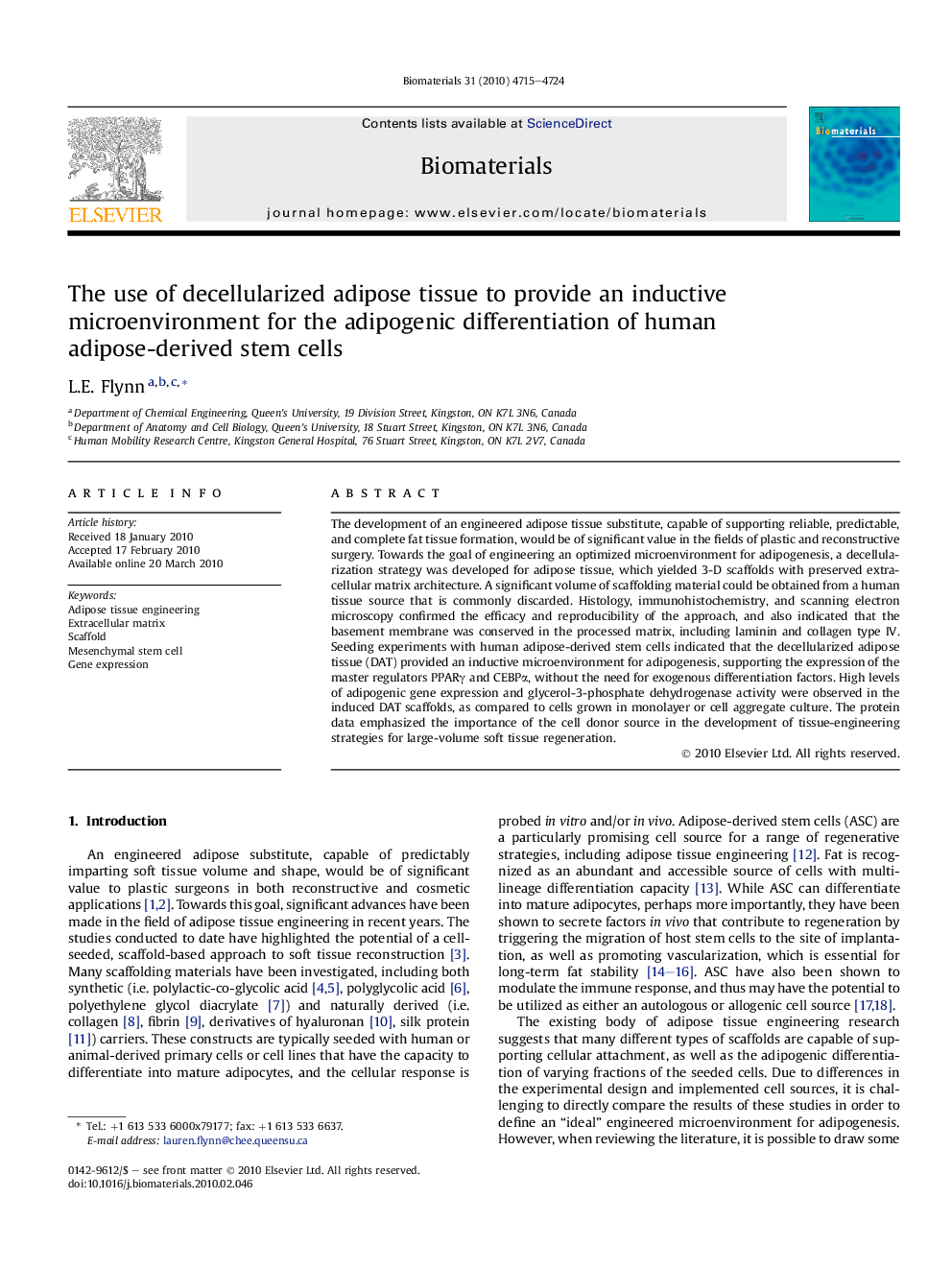| کد مقاله | کد نشریه | سال انتشار | مقاله انگلیسی | نسخه تمام متن |
|---|---|---|---|---|
| 9633 | 639 | 2010 | 10 صفحه PDF | دانلود رایگان |

The development of an engineered adipose tissue substitute, capable of supporting reliable, predictable, and complete fat tissue formation, would be of significant value in the fields of plastic and reconstructive surgery. Towards the goal of engineering an optimized microenvironment for adipogenesis, a decellularization strategy was developed for adipose tissue, which yielded 3-D scaffolds with preserved extracellular matrix architecture. A significant volume of scaffolding material could be obtained from a human tissue source that is commonly discarded. Histology, immunohistochemistry, and scanning electron microscopy confirmed the efficacy and reproducibility of the approach, and also indicated that the basement membrane was conserved in the processed matrix, including laminin and collagen type IV. Seeding experiments with human adipose-derived stem cells indicated that the decellularized adipose tissue (DAT) provided an inductive microenvironment for adipogenesis, supporting the expression of the master regulators PPARγ and CEBPα, without the need for exogenous differentiation factors. High levels of adipogenic gene expression and glycerol-3-phosphate dehydrogenase activity were observed in the induced DAT scaffolds, as compared to cells grown in monolayer or cell aggregate culture. The protein data emphasized the importance of the cell donor source in the development of tissue-engineering strategies for large-volume soft tissue regeneration.
Journal: Biomaterials - Volume 31, Issue 17, June 2010, Pages 4715–4724